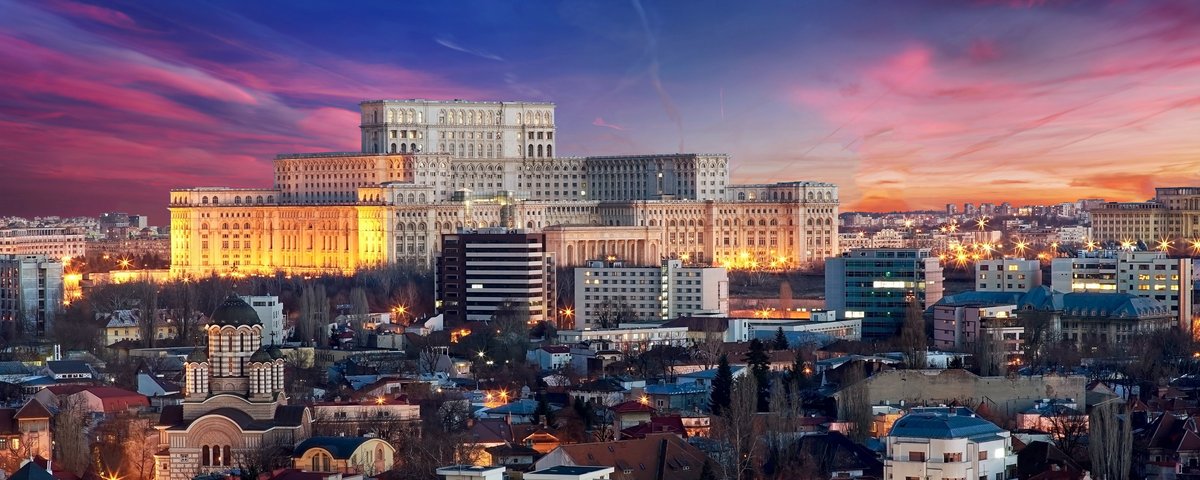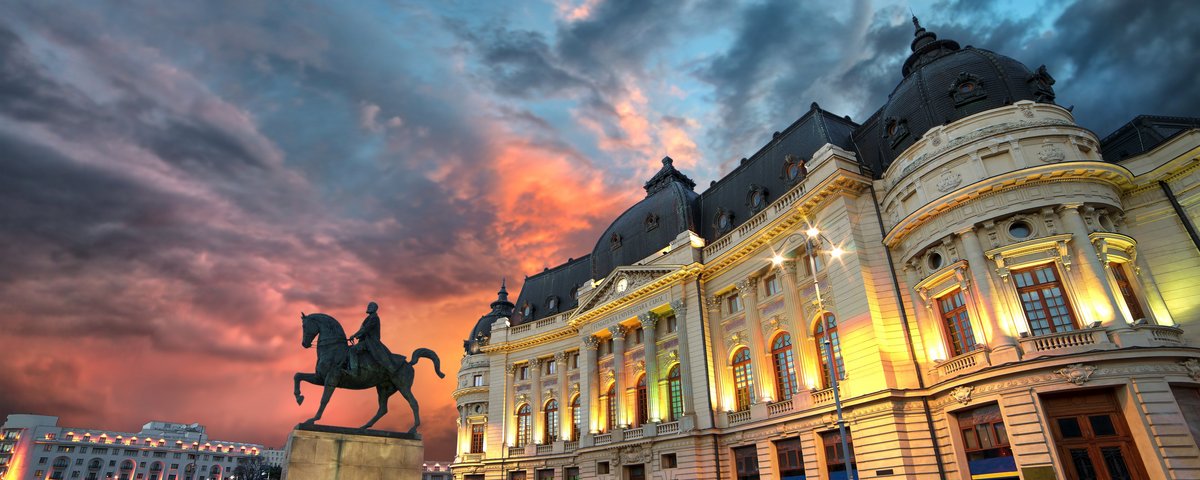City Breaks along the Danube
Step aboard one of the A-ROSA cruise ships and discover Bucharest from the river.
During your Danube cruise, the A-ROSA RIVA, the A-ROSA MIA and the A-ROSA FLORA will dock near Bucharest. Join us on one of our excursions, and explore the Romanian capital with a guide – or by yourself. Marvel at the city’s imposing palaces, its university square and its enormous triumphal arch.
Overview
Bucharest – Romania’s capital and home to around two million people – is a city of fascinating contrasts.
Beautiful boyar houses compete with sober concrete walls and dazzling glass facades. Straight avenues morph into winding streets. Cottages with gardens and crumbling neoclassical facades hold their own against 1930s-style residential complexes, socialist tower blocks and buildings in the Stalinist wedding-cake-style. Neon signs fight for space with long-established millinery and food shops. And there is nowhere else in the country where the gap between rich and poor is so evident.
A-ROSA River Cruises to Bucharest
No river cruise could be found
The best Sights and Destinations in Bucharest

PALACE OF PARLIAMENT
The Palace of Parliament on Arsenal Hill is just as controversial as it is famous. One of the world’s largest administrative buildings, this symbol of megalomania was known as The People’s House until 1989. The labyrinthine structure boasts 3,000 rooms – the largest of which features a 16-metre-high ceiling. The palace interior is full of magnificent marble-clad columns, walls decorated with elaborate wood inlay, lavishly embroidered drapes and ceilings adorned with grand chandeliers. Nowadays, the building houses Parliament, the senate and the National Museum of Contemporary Art

POST OFFICE PALACE | NATIONAL MUSEUM OF ROMANIAN HISTORY
The classical-style Post Office Palace dominates the Danube riverbank. Designed by Alexandru Savulescu, it was built around 1900. It is now home to the National Museum of Romanian History, whose archaeological finds, documents, tools and weapons take you on a journey through the country’s past, right up to 1970. The highlight of the collection is the Pietroasele Treasure – known as ‘the hen with golden chicks’, this 19-kilogram hoard of golden artefacts consists of cups, brooches and necklaces.
CHURCH OF STAVROPOLEOS MONASTERY
This church, with its richly decorated facade, used to serve as a place of worship for Greek merchants in the area. The Greek monk Ioanikie, who later became Metropolitan of Stavropol, had this trefoil-shaped building erected around 1724. The wall paintings and the iconostasis in the form of the Tree of Jesse inside the church are well worth seeing.
OLD PRINCELY COURT
Ruined walls, gravestones, columns and vaults still bear witness to the princely court that used to stand here. Built by Vlad the Impaler after 1459, it was last extended under Prince Constantin Brâncoveanu, who was ousted by the sultan in 1714. Next to it is the former court chapel. Constructed in 1559 and remodelled several times over the years, it is the oldest preserved religious building in Bucharest.
ROYAL PALACE
This neoclassical palace was built between 1927 and 1937, based on plans by the architect Nicolae Nenciulescu. It was home to Michael I of Romania until 1947. Today, the country’s most important art gallery – the National Museum of Art of Romania – is based here. Its impressive collection boasts a wealth of artistic treasures from various periods, including many masterpieces by European painters.

ROMANIAN ATHENAEUM
This antique-like monumental structure, built by the French architect Albert Galleron between 1885 and 1888, is as an expression of a strengthened Romanian national consciousness. By evoking antiquity, the building highlights the idea that Romanians are descended from the Romans. Today, the Athenaeum is the seat of the George Enescu Philharmonic Orchestra.

TRIUMPHAL ARCH
In 1878, after Romania gained independence, a wooden triumphal arch was erected. It was replaced by another temporary arch in 1922. The current arch, designed by Petre Antonescu and decorated with bas-reliefs like those on the Arc de Triomphe in Paris, was built between 1935 and 1936.
GRIGORE ANTIPA NATIONAL MUSEUM OF NATURAL HISTORY
Bucharest’s natural history museum is one of the largest in Europe. Visitors of all ages are fascinated by the exhibits collected from all corners of the earth, with the dinosaur skeleton proving particularly popular.

